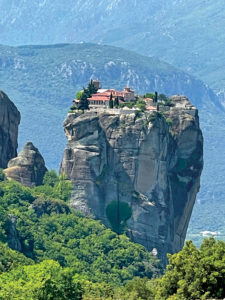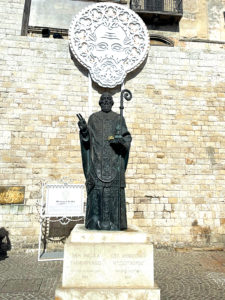Keeping change in perspective
Opinion
History is being made this week when lay women and men sit side-by-side with bishops and clergy at a plenary council of the Australian Church.

After the first assembly was held ‘virtually’ last October – a history-making event in itself – the second assembly will see nearly 300 people gather in person to consider the motions arising from four years of listening and dialogue.

The Holy Trinity Monastery in Meteora,
While many are quick to criticise the Church for being stuck in the dark ages, there can be no doubting there have been significant reforms since the Australian bishops gathered in 1937 for the Fourth Plenary Council.
Not only were there no lay men, let alone women, participating in discussions on the future of the Church, even the bishops felt like they had been excluded from the setting of the agenda because of the influence of successive apostolic delegates representing Rome.
Advertisement
It might seem that 85 years since the last Plenary Council is a long time, but in the whole scheme of Christianity, it’s just a nano-second. That’s no excuse for not being bold and forward-looking as we consider what God is asking of our Church today, but it does help put things into perspective when we look at the diversity of opinion, particularly around the nature and pace of reform.
I was lucky enough to travel to Europe last month and was reminded yet again of the incredible influence of Christianity as we visited monasteries atop monoliths in Meteora, Greece, and marvelled at the beauty of medieval and baroque cathedrals in Italy and France.
After stumbling upon the Basilica of St Nicolas in Bari, we paid our respects to the famous saint whose body lies there and returned for Mass on Sunday where the Italian service flowed into a Polish one without us realising it!
We visited the Benedictine Abbey of Vezelay in Burgundy, France, which became an important place of pilgrimage in the Middle Ages because it kept the relics of Mary Magdalene. Once again it was purely by accident that we came across this gem.
While there has been plenty of violence, corruption and greed associated with the Church throughout the ages, it is hard not to be moved and humbled by the sacrifice and hard work of people whose faith inspired them to build such grandiose places of beauty. Everywhere you look there are statues, paintings, ceiling frescoes and stained glass windows paying homage to the glory of God.

A statue of St Nicolas in Bari.
But it wasn’t just these significant and sacred sites that reminded us of the importance of Christianity. Seeing a pretty church steeple rising above the tiniest of villages and knowing that at the heart of every old town is a piazza with a beautiful church (next to a trattoria, osteria or bar – still can’t work out which is which), waking up in the morning, and during the night in some cases, to the sound of church bells ringing – these were other welcome reminders that we were in Catholic territory.
Advertisement
The Church may not be as powerful and omnipresent in Europe as it was in the past but it’s still there, and here, in all its different shapes and forms. We are a universal Church so the rate of change in some countries is much slower than in others. On our travels in Greece we found an entire peninsula where still today only monks are able to live and only men able to visit (the monastic community of Mount Athos). It makes our Australian Church look quite radical!
So as we gather for the momentous occasion of the second assembly of the Fifth Council, in person thank God, we pray that amidst the rich tradition of the Catholic Church and our hopes for the future there will be genuine, grace-filled listening and deliberation.








Comments
Show comments Hide comments